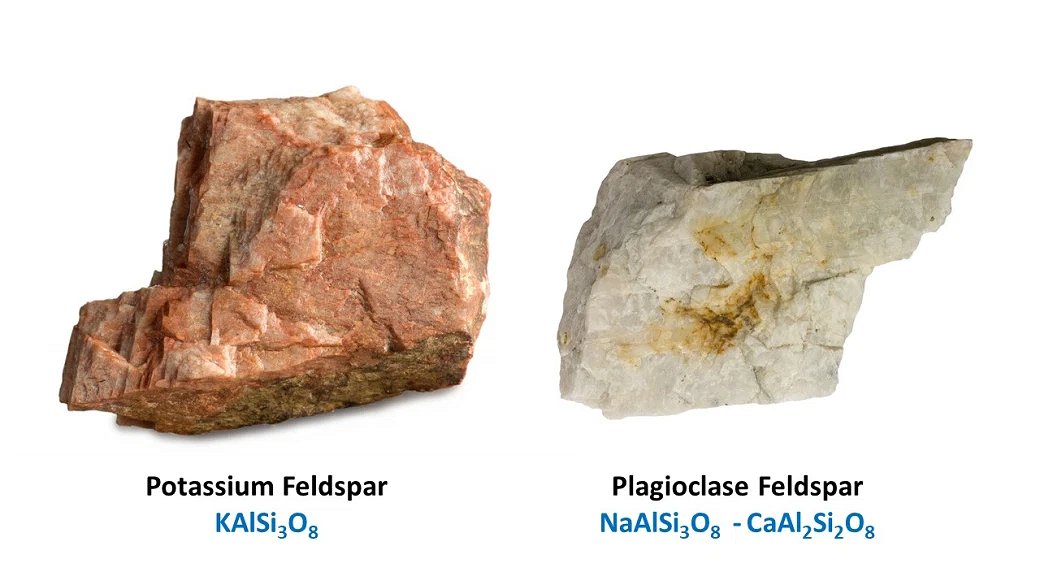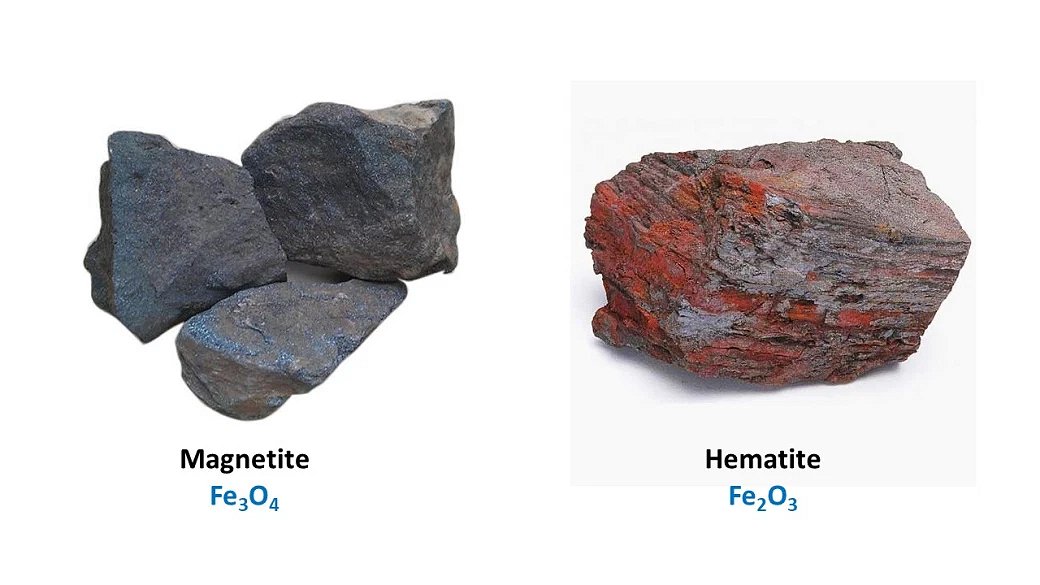Most rocks are formed from a very limited number of rock-forming minerals
There are thousands of naturally occuring minerals on Earth in rocks but most are very rare. Most rocks are composed of very common rock-forming minerals. Knowing about these common minerals makes undertanding most rocks easy.
To help understand minerals and the rocks they form they are classified into groups.
There are many different ways to classify minerals with complex schemes based on crystal structure or chemical composition but a good place to start is to divide them into two classes – light-coloured minerals and dark-coloured minerals.
Common light-coloured rock-forming minerals
∗ Feldspars
Feldspars are the most common mineral in the Earth’s crust.
They are reasonably hard, are often white-cream-pink, and may form crystals that look like small blocks.
Feldspars contain a range of elements but two broad classes are recognised:
- potassium feldspar - it contains potassium (chemical symbol K) and is often a pink-ish colour
- plagioclase feldspar - it contains sodium (chemical symbol Na) and/or calcium (chemical symbol Ca) instead of potassium
∗ Quartz
Quartz (SiO2) is a hard mineral that is most commonly translucent or white but it can occur in a range of other colours. The purple crystals in the bar at the top of this page are a variety of quatz known as amethyst.
∗ Muscovite
Muscovite is a soft mineral that is usually silver, light brown or clear. It is a member of the mica group of minerals and occurs as flat crystals that can be separated into flakes.
The sample on the left shows 3 pieces of muscovite. The thickest piece is darker than the others because light cannot penetrate it. The 2 other pieces are thinner. You can easily see the black and yellow scale through the thinnest piece of the mineral! The other piece looks white because you can see the background colour which is white.
The sample on the right is a rock that is mostly composed of small grains of muscovite.
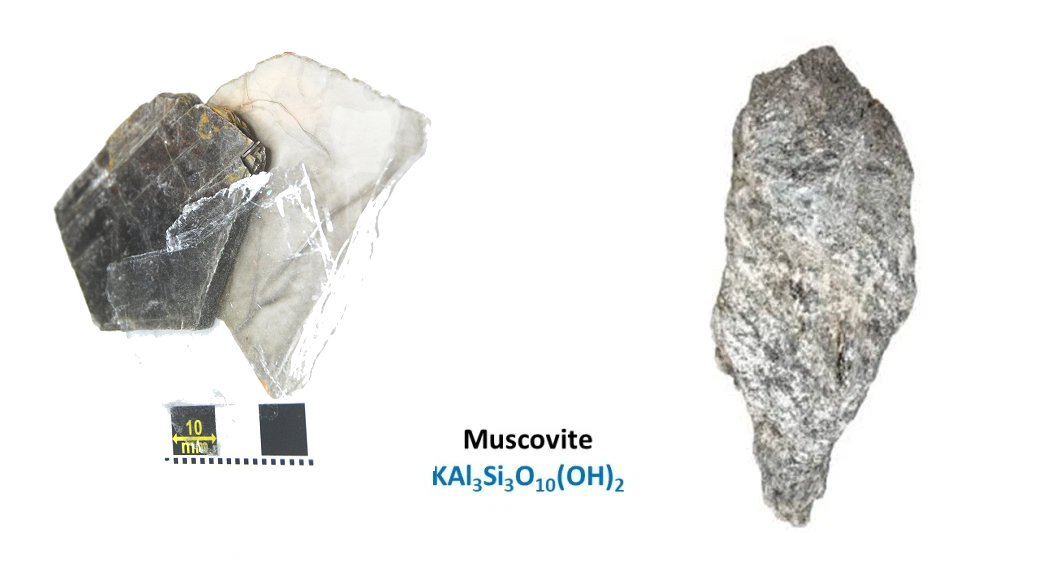
∗ Carbonates
Carbonate minerals are relatively soft and may range from clear to white to grey or brown depending on the elements that are arranged with the carbonate ion [CO3]
Common carbonate minerals include calcite (calcium carbonate CaCO3), dolomite (calcium-magnesium carbonate) and magnesite (magnesium carbonate).
Carbonate minerals, especially calcite, react with acids. They dissolve in acid, releasing a gas (carbon dioxide). If a strong acid is used the gas release can be vigorous and obvious fizzing can be heard and bubbling off of the gas observed.
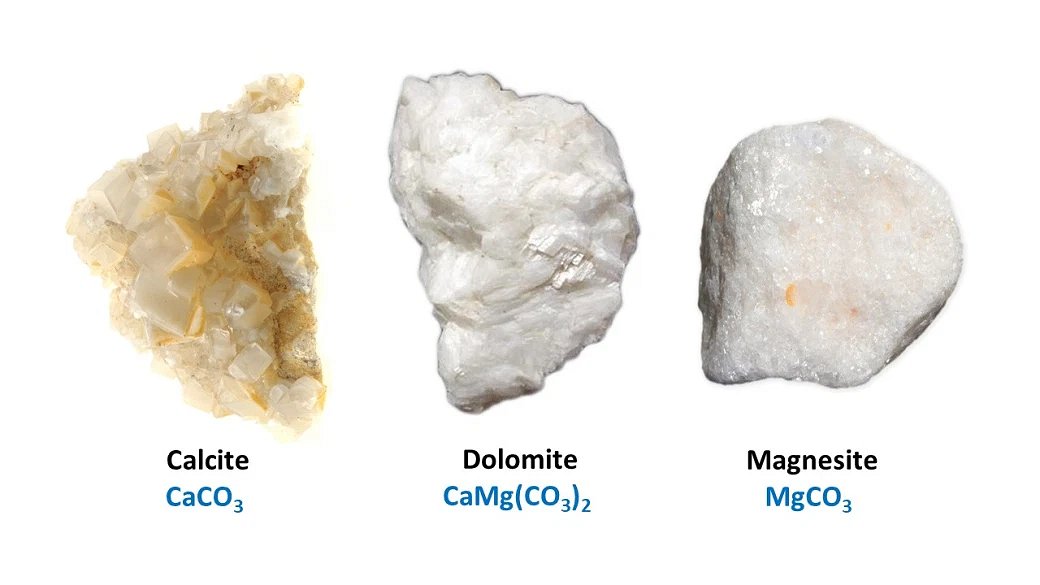
∗ Aluminium Silicates
Aluminium silicate minerals are common components of metamorphic rocks. They are hard and range in colour from white to grey to light brown and light blue.
There are three commonly occurring aluminium silicate minerals, andalusite, sillimanite and kyanite that all have the same composition (Al2SiO5).
Minerals of the same composition but different crystal structure are called polymorphs.
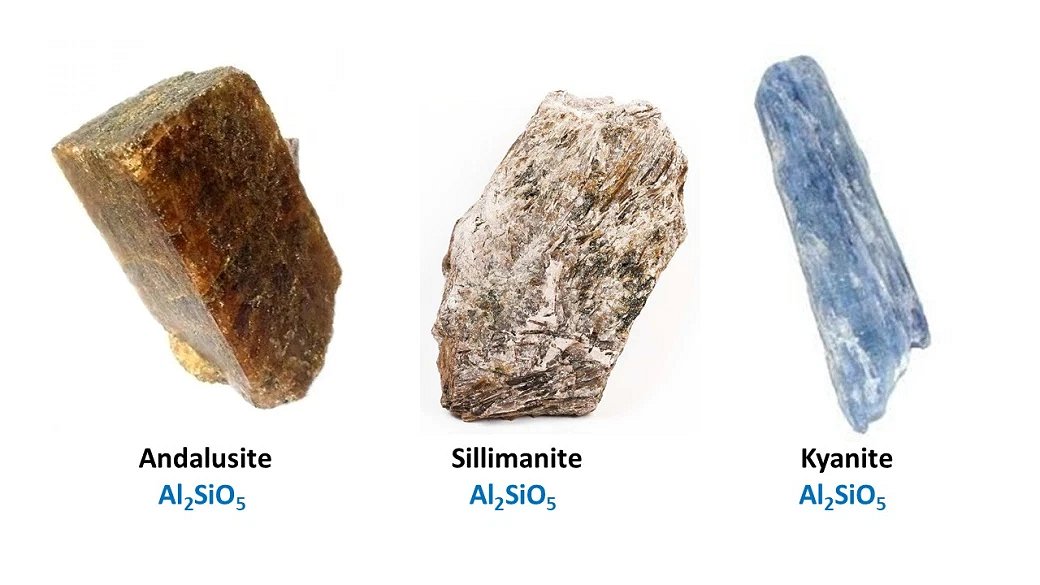
Common dark-coloured rock-forming minerals
Dark-coloured rock-forming minerals commonly contain high proportions of iron (Fe) and/or magnesium (Mg).
∗ Olivine
Olivine is reasonably hard, is commonly pale green and occurs a squat crystals. It is a common mineral in dark-coloured igneous rocks.
Olivine is the most abundant mineral in the Earth’s mantle.
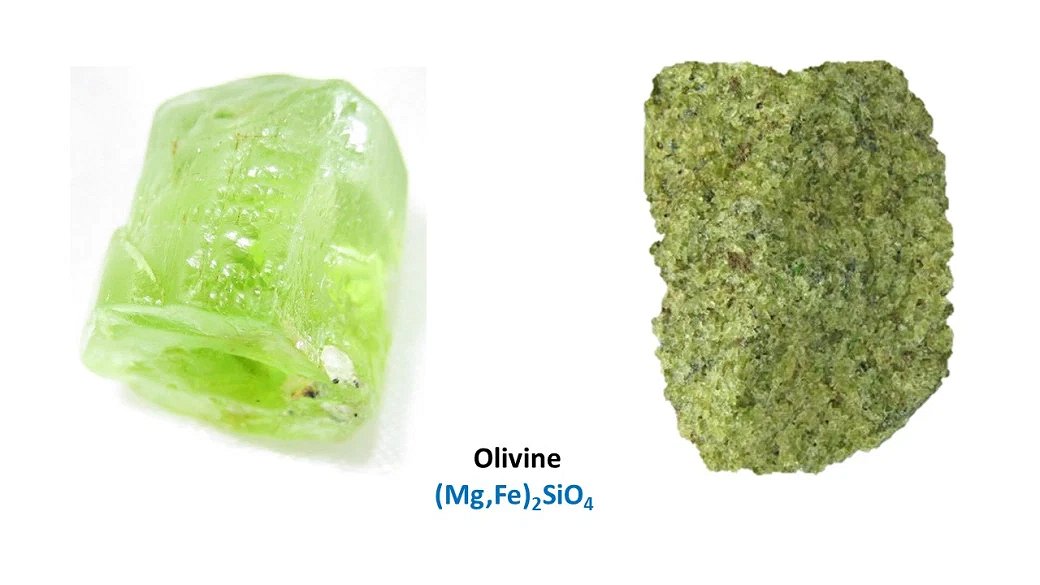
∗ Pyroxenes
Pyroxene minerals are hard and usually black or dark brown.
They occur commonly in dark-coloured igneous rocks as small blocky crystals.
Pyroxenes can be very difficult to distinguish from amphiboles if the crystals are small.
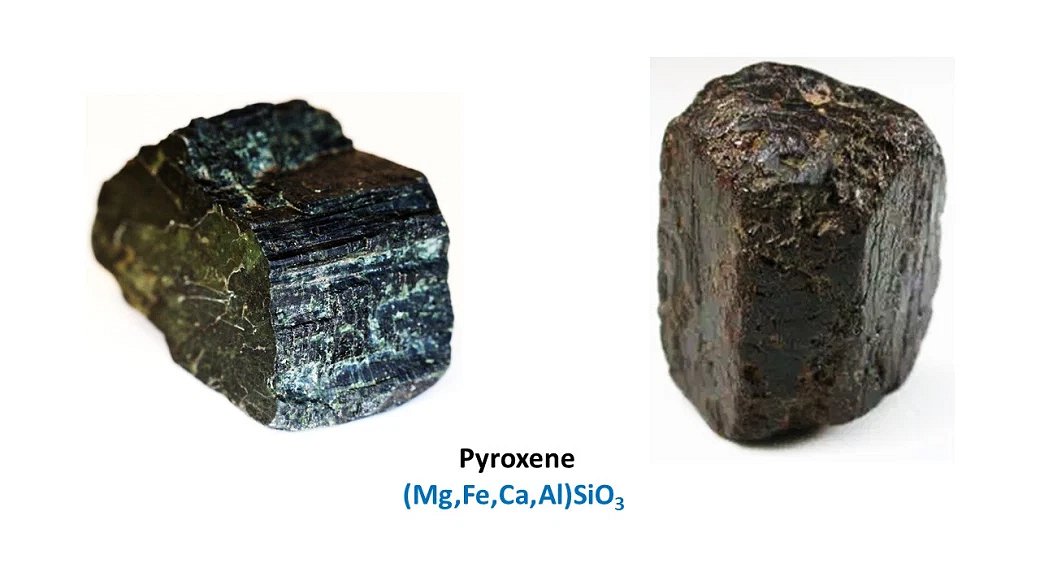
∗ Amphiboles
Amphibole minerals are hard and can be black, dark brown, green or blue.
They occur commonly in dark-coloured igneous rocks as small blocky or elongate crystals
Amphiboles can be very difficult to distinguish from pyroxenes if the crystals are small.
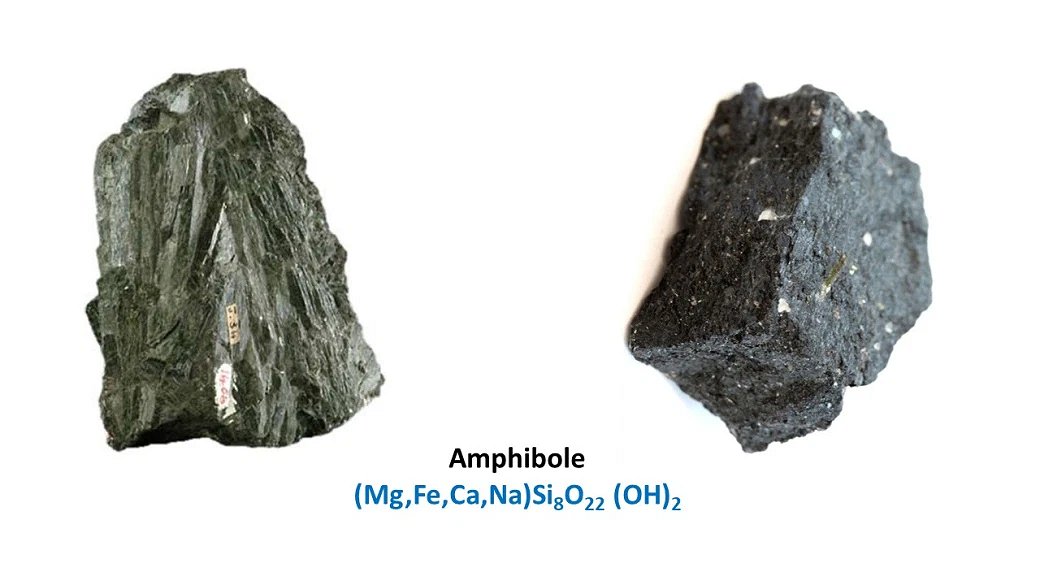
∗ Biotite
Biotite is soft and can be black, dark brown or dark green.
It is a member of the mica group of minerals and, just like muscovite, it occurs as flat crystals that can be separated into flakes.
Thin flakes can be translucent to transparent, but with a dark tint.
Biotite occurs in a wide range of igneous rocks and some metamorphc rocks.
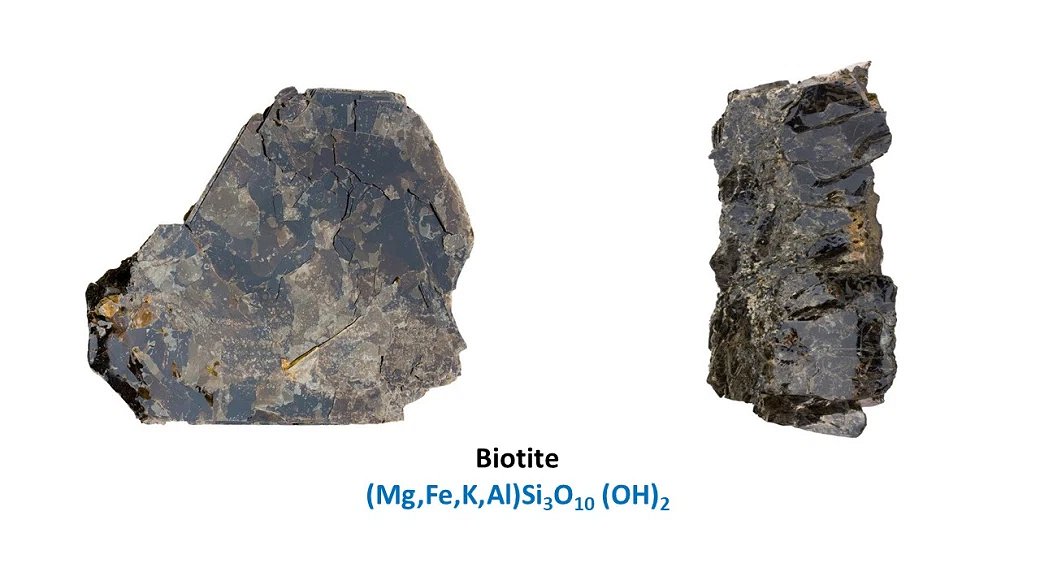
∗ Garnet
Garnet is a very hard mineral that can be red, brown, yellow or green but most commonly red-brown.
Garnet commonly occurs in medium grade regional metamorphic rocks as crystals with obvious crystal faces.
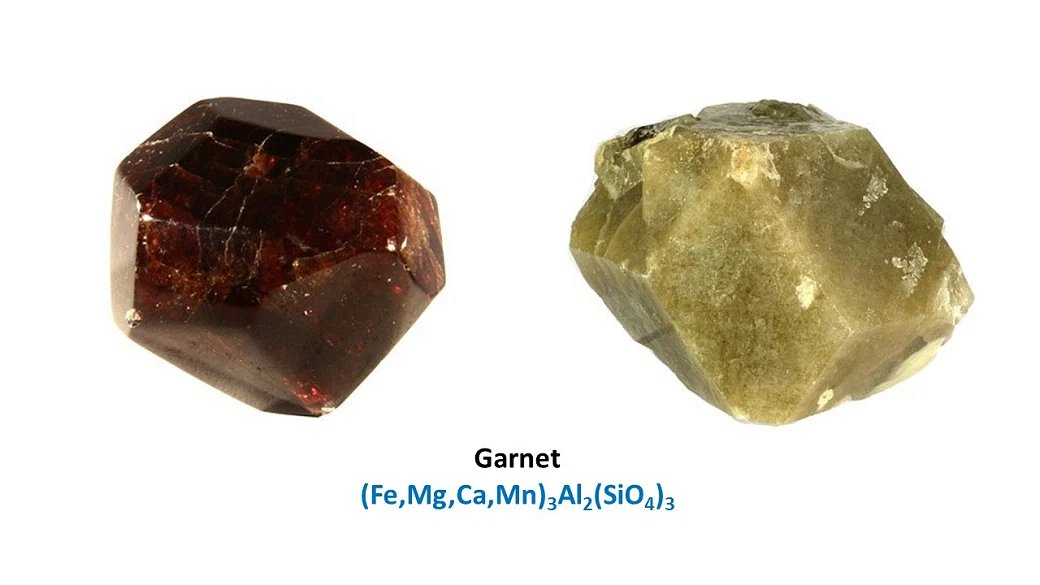
∗ Iron oxides
Iron (Fe) oxide minerals are typically relatively hard, black or brown crystals
Fe-oxides occur in small proportions in many rocks but can also be produced from weathering of minerals containing iron such as pyroxene or amphibole.
Magnetite (Fe3O4) is a strongly magnetic iron-rich mineral and can make rocks magnetic even when it is present in only small proportions .
Hematite (Fe2O3) is the main material, along with other Fe-oxides colouring the surface of many weathered rocks and soils. It has been used as a red pigment and is the main colouring agent in red ochre.
| Minerals | Rock Cycle | Igneous Rocks | Sedimentary Rocks | Metamorphic Rocks |
A joint TESEP - AusGeol.org production.
This educational product is designed for Yr 7-10 secondary students to complement the earth and space component
of the Australian National Science Curriculum and all Australian State and Territory curricula
The content and design of this educational product is based upon materials previously published by AusGeol.org

